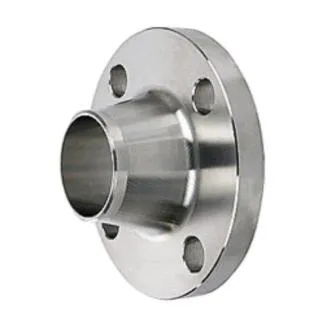-
Cangzhou Yulong Steel Co., Ltd.
-
Phone:
+86 13303177267 -
Email:
admin@ylsteelfittings.com
- English
- Arabic
- Italian
- Spanish
- Portuguese
- German
- kazakh
- Persian
- Greek
- French
- Russian
- Polish
- Thai
- Indonesian
- Vietnamese
- Zulu
- Korean
- Uzbek
- Hindi
- Serbian
- Malay
- Ukrainian
- Gujarati
- Haitian Creole
- hausa
- hawaiian
- Hebrew
- Miao
- Hungarian
- Icelandic
- igbo
- irish
- Japanese
- Javanese
- Kannada
- Khmer
- Rwandese
- Afrikaans
- Albanian
- Amharic
- Armenian
- Azerbaijani
- Basque
- Belarusian
- Bengali
- Bosnian
- Bulgarian
- Catalan
- Cebuano
- China
- China (Taiwan)
- Corsican
- Croatian
- Czech
- Danish
- Esperanto
- Estonian
- Finnish
- Frisian
- Galician
- Georgian
- Kurdish
- Kyrgyz
- Lao
- Latin
- Latvian
- Lithuanian
- Luxembourgish
- Macedonian
- Malgashi
- Malayalam
- Maltese
- Maori
- Marathi
- Mongolian
- Myanmar
- Nepali
- Norwegian
- Norwegian
- Occitan
- Pashto
- Dutch
- Punjabi
- Romanian
- Samoan
- Scottish Gaelic
- Sesotho
- Shona
- Sindhi
- Sinhala
- Slovak
- Slovenian
- Somali
- Sundanese
- Swahili
- Swedish
- Tagalog
- Tajik
- Tamil
- Tatar
- Telugu
- Turkish
- Turkmen
- Urdu
- Uighur
- Welsh
- Bantu
- Yiddish
- Yoruba

Oct . 18, 2024 15:07 Back to list
stainless steel tube forming
The Process of Stainless Steel Tube Forming
Stainless steel tube forming is a crucial manufacturing process widely utilized in various industries, including aerospace, automotive, medical, and construction. This process involves shaping stainless steel into tubes of various sizes and configurations for numerous applications. Understanding the techniques, benefits, and challenges of stainless steel tube forming can provide insights into its significance in modern manufacturing.
Techniques of Stainless Steel Tube Forming
The manufacturing of stainless steel tubes typically employs several techniques, including extrusion, rolling, welding, and hydroforming. Each of these methods has its own unique advantages and is suited to different applications.
1. Extrusion This method involves forcing heated stainless steel through a die to create a tube shape. It is particularly effective for producing seamless tubing, which enhances strength and durability. The extrusion process allows for complex designs and varying wall thicknesses, making it a preferred choice for structural and automotive components.
2. Rolling Rolling is used to create tubes by shaping flat stainless steel sheets or strips into cylindrical forms. This can be done using either hot or cold rolling techniques. Hot rolling allows for greater material deformation at elevated temperatures, while cold rolling improves surface finish and dimensional accuracy. Each technique lends itself to different end-use characteristics.
3. Welding Stainless steel tubes can also be formed using welding, particularly in the production of welded tubes. This process typically involves taking flat bands of stainless steel and welding them together to form a tube. Various welding methods, such as TIG (Tungsten Inert Gas) or MIG (Metal Inert Gas), can be employed to ensure a strong and reliable joint.
4. Hydroforming This innovative method uses high-pressure fluid to form stainless steel sheets into tubular shapes. Hydroforming is particularly beneficial for creating complex geometries that would otherwise be difficult to achieve with traditional forming methods. The process improves the material’s strength while reducing the necessity for excess machining.
Benefits of Stainless Steel Tube Forming
stainless steel tube forming

Stainless steel is favored in tube production for several reasons its corrosion resistance, strength, and aesthetic appeal
. These properties make it particularly valuable in environments where durability and hygiene are paramount, such as in the food processing and healthcare industries.1. Corrosion Resistance Stainless steel contains chromium, which forms a protective layer on the surface of the material. This layer prevents oxidation and extends the life of the tubes, even in corrosive environments. Thus, stainless steel tubes ensure reliability and reduce maintenance costs over time.
2. Strength Stainless steel tubes exhibit high tensile strength and can withstand considerable stress. Their mechanical properties allow them to support heavy loads without deformation. This characteristic is essential in applications such as construction and heavy machinery.
3. Aesthetic Appeal The polished finish of stainless steel tubes contributes to their attractiveness for architectural applications. They can be used in visible structural elements while maintaining a sleek and modern appearance.
Challenges in Stainless Steel Tube Forming
Despite its numerous advantages, stainless steel tube forming comes with certain challenges. The material's higher production costs compared to carbon steel and aluminum may deter some manufacturers from utilizing it. Additionally, the forming process itself requires specialized equipment and expertise to handle the specific properties of stainless steel effectively.
Moreover, maintaining consistency in dimensions and tolerances throughout production can be a challenging task, especially for high-volume manufacturing. Variability in material properties, equipment settings, and operator skill can lead to discrepancies, necessitating rigorous quality control measures.
Conclusion
Stainless steel tube forming is a key component of manufacturing in various industries, providing essential components that combine strength, durability, and elegance. With techniques such as extrusion, rolling, welding, and hydroforming, manufacturers are equipped to produce tubes suited to specific applications and rigorous demands. While challenges exist, the benefits of stainless steel ensure that it remains a preferred choice for engineers and manufacturers looking to leverage modern materials in their designs. As technology advances and manufacturing techniques improve, the applications and potential for stainless steel tube forming will continue to expand.
Latest news
-
ANSI 150P SS304 SO FLANGE
NewsFeb.14,2025
-
ASTM A333GR6 STEEL PIPE
NewsJan.20,2025
-
ANSI B16.5 WELDING NECK FLANGE
NewsJan.15,2026
-
ANSI B16.5 SLIP-ON FLANGE
NewsApr.19,2024
-
SABS 1123 FLANGE
NewsJan.15,2025
-
DIN86044 PLATE FLANGE
NewsApr.19,2024
-
DIN2527 BLIND FLANGE
NewsApr.12,2024
-
JIS B2311 Butt-Welding Fittings LR/SR 45°/90° /180°Seamless/Weld
NewsApr.23,2024











